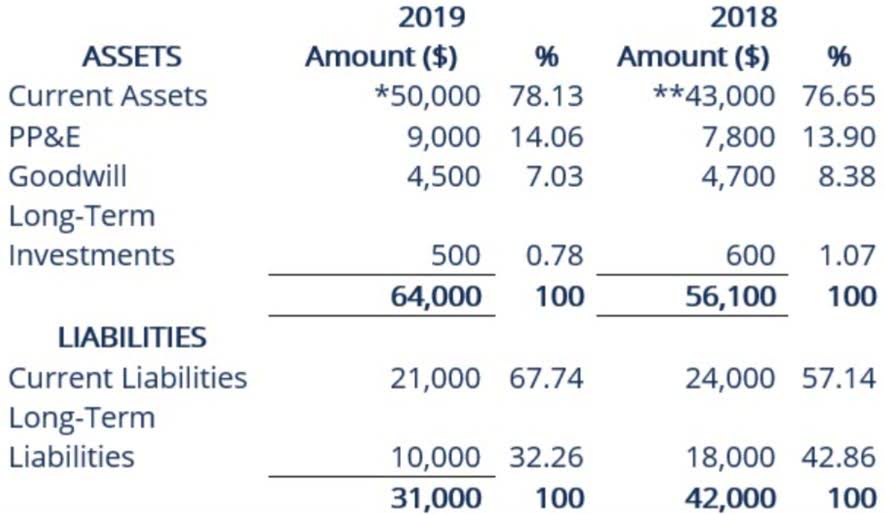
OCI, sometimes referred to as comprehensive earnings, represents specific types of unrealized gains and losses that are not included in a company’s net income. Given that IFRS does not define gross profit, operating results or many other common subtotals, there’s flexibility when adding and defining new line items in the income statement. Many companies disclose ‘operating profit‘ or ’results from operating activities‘ as a subtotal contra asset account before profit or loss in the income statement. As a general rule, all additional line items and subtotals should be clearly labeled and presented, made up of items recognized and measured using IFRS, and calculated consistently across periods. Further, items shouldn’t be displayed with more prominence than other items required in the income statement.

Company
The Internal Revenue Service (IRS) permits businesses to deduct operating expenses if the business operates to gain profits. This means that revenues and expenses are classified whether they are part of the primary operations of the business or not. A standard CI statement is usually attached to the bottom of the income statement and includes a separate heading. Reduce the income tax from the pre-tax income to https://www.facebook.com/BooksTimeInc arrive at your company’s net income. This will offer you a broad picture of your company’s success and allow you to assess how lucrative it has been. Income Statement and Statement of Comprehensive are differentiated because IAS 1 gives two options to present the items of incomes and expenses recognized during the period.
Start free ReadyRatios reporting tool now!

On your trial balance report, add up all the cost of sales line items and enter the total amount of cost of sales just below the revenue line item on the income statement. It not only explains the cost of sales, which is connected to the operational activities, but it also covers additional expenditures that are not related to the operational activities, such as taxes. Similarly, the income statement records various sources of money that are unrelated to a company’s primary operations. However, there is a general lack of agreement about which items should be presented in profit or loss and in OCI. The interaction between profit or loss and OCI is unclear, especially the notion of reclassification and when or which OCI items should be reclassified. A common misunderstanding is that the distinction is based upon realised versus unrealised gains.
- Typically, investors prefer looking at a company’s operating profit figure rather than a company’s bottom line as it gives them a better idea of how much money the company is making from its core operations.
- At the end of each financial year, companies need to value the available for sale securities.
- Also known as comprehensive earnings, this is a catch-all classification for the items that cannot be included in typical profit and loss calculations because they do not stem from the company’s regular business activities and operations.
- For example, gains on the revaluation of land and buildings accounted for in accordance with IAS 16, Property Plant and Equipment (IAS 16 PPE), are recognised in OCI and accumulate in equity in Other Components of Equity (OCE).
- What he can’t see on the income statement is any information about the company’s purchase of the 5,000 shares and how that investment is working out for the company.
Submit to get your retirement-readiness report.

Here’s a snapshot of how you need to format your consolidated statement of comprehensive income. We believe the presentation of items in the income statement will continue to be a heightened area of focus and subject to future change. We believe it is possible to characterize items as unusual or exceptional under certain conditions. This should be infrequent and reserved for items that justify a prominence greater than that achieved by separate presentation and disclosure – e.g. a natural disaster. Those items should also be classified by nature or function, in the same way as usual or non-exceptional amounts. Lastly, companies should provide an explanation of the nature of the amount and why the item has been classified in this manner.
- Profit or loss includes all items of income or expense (including reclassification adjustments) except those items of income or expense that are recognised in OCI as required or permitted by IFRS standards.
- Some examples of other comprehensive income are foreign currency hedge gains and losses, cash flow hedge gains and losses, and unrealized gains and losses for securities that are available for sale.
- The higher the earnings for each share, the more profitable it is to invest in that business.
- It also helps business owners determine whether they can generate high profit by increasing prices, decreasing costs, or both.
- Our team of experienced professionals can help you navigate the complexities of comprehensive income and ensure that your financial statements are accurate, compliant, and decision-useful.

An income statement should be used in conjunction with the other two financial statements. It provides insights into a company’s overall profitability and helps investors evaluate a company’s financial performance. Directors and executives are also provided a clear picture of the performance of the company as a whole during a specific accounting period. Operating expenses totaling $37,000 were then deducted from the gross profit to arrive at the second level of profitability – operating profit which amounted to $6,000. EBT, also referred to as pre-tax income, measures a company’s profitability before income taxes are accounted for. EBIT is helpful when analyzing the performance of the operations of a company without the costs of the tax expenses and capital structure impacting profit.
Step 1 of 3
It is also practical to use this format when you do not need to separate operating expenses from the cost of sales. A single-step income statement is useful when your business does not have complex operations or only needs a simple statement that could report the net income of a business. It is also known as the profit and loss (P&L) statement, where profit or loss is determined by subtracting all expenses from the revenues of a company. Here you can see the exact presentation of the statement of comprehensive income and all other reporting statements required by IFRS. A revaluation surplus on a financial asset classified as FVTOCI is a good example of a bridging gain.
Just a Few More Details
Reclassification adjustments are amounts recognised to profit or loss in the current period that were previously recognised in OCI in the current or previous periods. Examples of items recognised in OCI that may be reclassified to profit or loss are foreign currency gains on the disposal of a statement of comprehensive income foreign operation and realised gains or losses on cash flow hedges. Those items that may not be reclassified are changes in a revaluation surplus under IAS 16® , Property, Plant and Equipment, and actuarial gains and losses on a defined benefit plan under IAS 19, Employee Benefits.
No responses yet